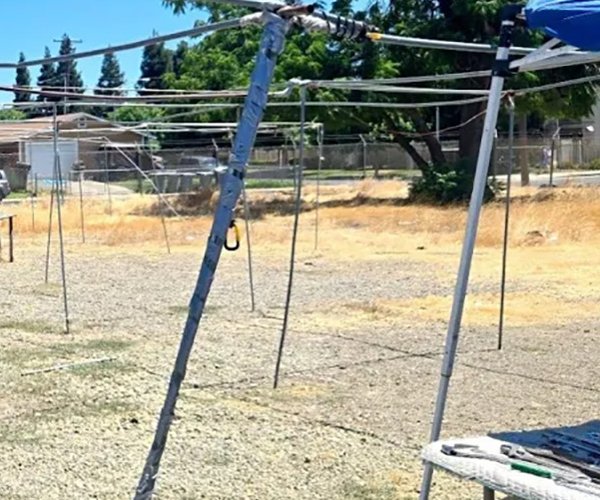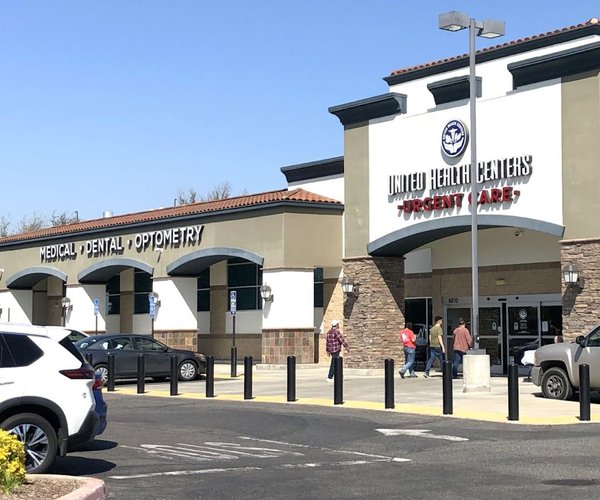HUGHSON — Local dignitaries gathered for a ribbon-cutting ceremony on Tuesday to officially open the $230 million Stanislaus Regional Surface Water Treatment Plant north of Turlock.
Set on 47 acres near Fox Grove Park, the plant will provide clean, sustainable drinking water from the Tuolumne River for the cities of Turlock and Ceres, while reducing dependence on groundwater.
In 2011, both cities, along with Turlock Irrigation District, formed the Stanislaus Regional Water Authority, a joint powers authority to build and operate the plant. To pay for the plant, the city councils of both cities enacted a series of water-rate increases.
Turlock Mayor Amy Bublak, Ceres Mayor Javier Lopez, TID general manager Michelle Reimers, and SRWA general manager Christopher Fisher were joined on the dais by DeeDee D’Adamo, a member of the state’s Water Resources Control Board, and Elena Misaghi, an engineer with the Department of Water Resources. They were joined for the ribbon-cutting by representatives from the offices of Rep. John Duarte (R-Hughson), Rep. Tom McClintock (R-El Dorado Hills), state Sen. Marie Alvarado-Gil (D-Jackson), and Assemblymembers Juan Alanis (R-Modesto) and Heath Flora (R-Ripon); by members of the TID board of directors; Turlock Police Chief Jason Hedden; Turlock Fire Chief Andrew Hunter; Turlock vice mayor Pam Franco; Ceres vice mayor Bret Silveira; Turlock city manager Reagan Wilson; Yosemite Community College District trustee Milt Richards; and many others.
“We have the collaboration of 30 years and in today’s world it’s super hard to get anybody to collaborate,” said Bublak. “But the excitement of having safe, affordable drinking for the future is amazing.”
Lopez echoed those sentiments.
“What I think is really important is that we just provided affordable, clean water to our residents,” said Lopez. “It’s been a longtime coming. I’m very humbled. And the fact that we’re here today, I’m very proud of the board.”
The plant is capable of processing 15 million gallons of water per day, with 10 million gallons earmarked for Turlock and 5 million for Ceres.
“If the region has a diverse water supply, then that helps the region be more resilient during periods when supplies are significantly reduced — in other words, during drought,” said D’Adamo. “If during normal years, if we’re not drawing as much on the groundwater basin, that allows the groundwater levels to rebound. Then the groundwater can operate a little bit more the way it has historically. And that is as sort of a bank account for when you need to dip down a little more during periods of drought.”
The SRWA borrowed $185 million for the construction after receiving $35 million in grant funds. Borrowing from the State Revolving Fund at 1.2 percent interest rate has saved the project $100 million it would have incurred through municipal-bond financing at a 4 percent rate.
Based on water needs of their populations, Turlock is responsible for two-thirds, or roughly $123 million, while Ceres will pay roughly a third of the cost, or about $62 million.
Silveira grew up in Ceres and knows all too well about the quality of the city’s drinking water.
“It’s been a bad thing for a long time,” said Silveira. “I’ve been there my whole life and water’s always been an issue, and it’s exciting to be able to tell our citizens they’re going to have clean, healthy drinking water.”
Besides delivering good and clean water from the river, the plant offers some environmental benefits. The added flow released by the dam for the water plant will make for colder water temperatures, which in turn helps fish habitat along the 26-mile stretch from Don Pedro to Hughson. Using less groundwater will mean faster recharge of aquifers beneath Ceres and Turlock.
“This is the right move to make,” said Fisher. “It’s very, very important and it’s truly an historic partnership with Turlock Irrigation District. Without them, this thing might not have come to fruition.”
TID board president Ron Macedo said he hopes that the project will grow to include more than just Turlock and Ceres.
“My hope is that we can get the rest of the communities in this county involved,” said Macedo. “Hilmar, Keyes, Hughson, and those communities, as well. Get them involved. It would be great. This is a fantastic project.”









